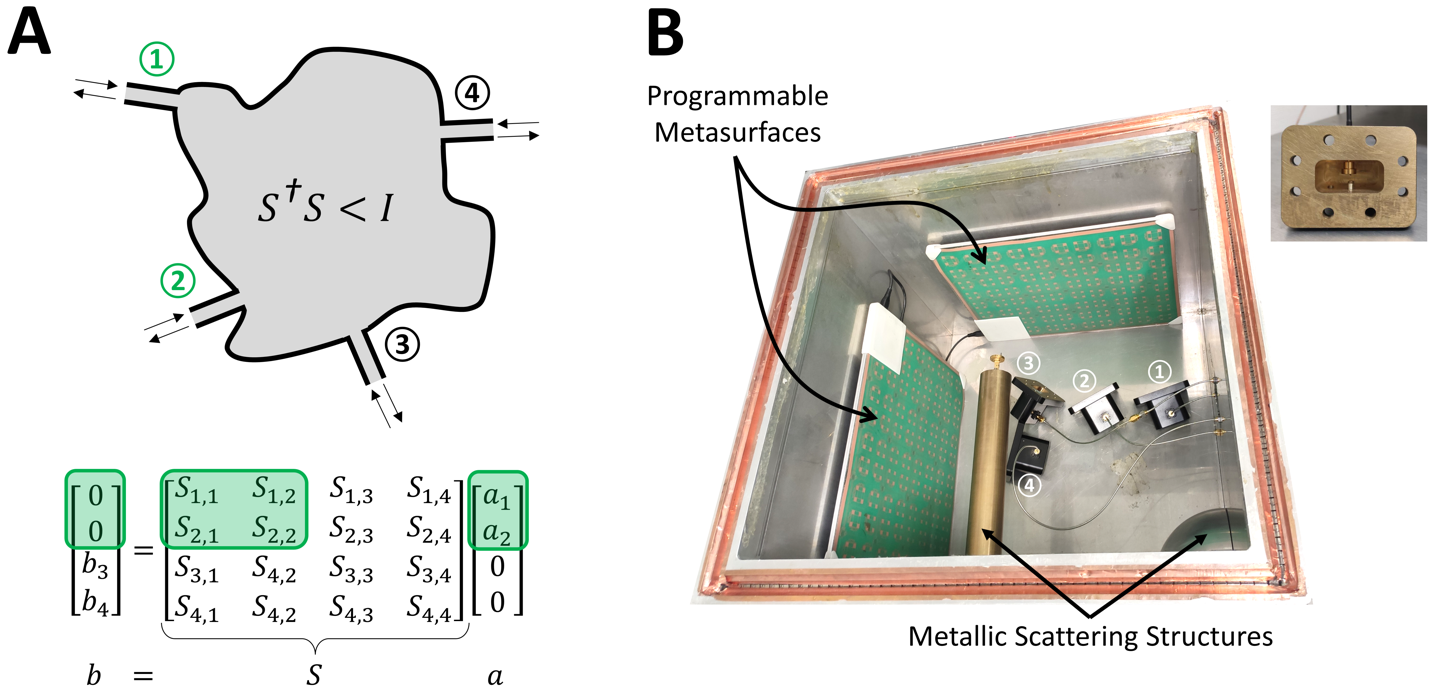Physicists build novel “anti-laser” technological device
Physicists have developed an innovative reflectionless “anti-laser” device with applications in photonics.

Courtesy of Philipp del Hougne
A recently published study has taken on the hurdle of developing a reflectionless device — known as the “coherent perfect absorber” or “anti-laser” — that is capable of routing signals and maintaining information integrity.
Signal routers, which direct microwave and optical signals, are renowned for their applications in photonics and have been used for radiofrequency networks and nanophotonic devices. Nevertheless, considerable reflection and loss of signal power after injecting signals into the router results in information loss.
To analyze if it was possible to avoid reflection and to guide light into chosen output channels, the team combined a special type of controller called metasurface with a theoretical framework — also known as reflectionless scattering modes — that allows for the calculation of device designs which will not produce a reflection.
“The answer was a resounding ‘yes,’” Philipp del Hougne, a researcher at the Université de Rennes 1 and co-author of the study, told the News. “We demonstrated excellent performance in the function of separating two signals into different output ports, known as demultiplexing, with an error of one part in 10,000.”
This ability to combine the theoretical framework with the new programmable metasurface technology is what sets apart this novel device from previously developed “anti-lasers.” Modern networks use isolators — devices which transmit light in one direction — to avoid such reflected power echoes, but their implementation is limited due to high costs.
However, with devices with zero reflection like the one from this study, isolators may no longer be necessary.
“Our experiments take a completely random system as a starting point and using many tunable degrees of freedom offered by a programmable metasurface, we judiciously tune it to the desired reflectionless routing functionality,” wrote co-author Douglas Stone, deputy director of the Yale Quantum Institute and professor of applied physics. “We can hence also reprogram our reflectionless signal router in situ.”
Previously, Stone’s team developed a device which could absorb more than 99 percent of infrared light. Rather than absorbing light, the anti-laser redirects it to output channels.
Hougne emphasized the importance of managing light propagation in a network.
“Controlling and routing light propagation on a chip or in a network is a critical function for future devices which use light and not electricity for information transfer and processing, and for sensing the environment,” Hougne wrote.
Kabish Wisal GRD ’25 highlighted the relevance of this novel device.
“I would say the research is quite important as it demonstrates a pathway for programmable wavelength demultiplexing which will be useful for on-chip signal processing,” Wisal told the News.
The team hopes that this study helps foster the development of a device which is not only more efficient but also more feasible to manufacture and implement. In the future, Hougne also strives to develop a “deeper understanding of how many programming states” are required to achieve an “efficient routing of signals.”
The study was featured in the journal Science Advances.







